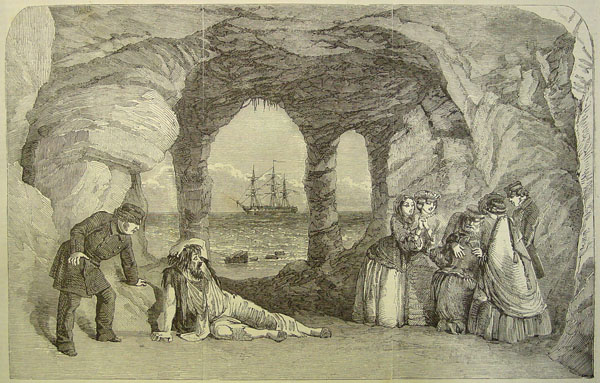The Frozen Deep: Difference between revisions
imported>Russell Potter No edit summary |
imported>Howard Arvi Hughes m (Category:Theater Workgroup) |
||
| Line 9: | Line 9: | ||
[[Category:CZ Live]] | [[Category:CZ Live]] | ||
[[Category:Theater Workgroup]] | |||
Revision as of 16:07, 20 November 2006
The Frozen Deep was a play, originally staged as an amateur theatrical, written by Wilkie Collins along with the substantial guidance of Charles Dickens. Dickens's hand was so prominent -- adding a proem, altering lines, and attending to most of the props and sets -- that the principal edition of the play is entitled "Under the Management of Charles Dickens." Although its original audience, as staged in Dickens's home Tavistock House, was modest, the play grew in influence through a series of outside performances, including one before Queen Victoria at the Royal Gallery of Illustration, and a two-week run at the Manchester Trade Union Hall to benefit the widow of Dickens's old friend Douglas Jerrold. There, night after night, the play moved everyone -- including, by some accounts, the carpenters and the stage-hands -- to tears. It also brought Dickens together with Ellen Ternan, an actress he hired to play one of the parts, and for whom he would leave his wife Catherine.
The play was loosely inspired by the loss of Sir John Franklin's lost Arctic expedition of 1845, in which Dickens had taken a great interest. Specifically, in the fall of 1854, when the Hudson's Bay Company factor Dr. John Rae (explorer) brought back Inuit reports of cannibalism among Franklin's men, Dickens was so perturbed that he launched a debate with Rae in the pages of his own periodical, Household Words. He also corresponded with Franklin's widow Jane, and gave a speech at a dinner organized to highlight the search for Franklin's men. By 1856, however, it became increasingly clear that there were no survivors, although Lady Jane Franklin still hoped to launch a new expedition to resolve her husband's ultimate fate. It was in this context that, in the spring of 1857, Dickens conceived of a play set in the Arctic for the next round of their traditional winter theatricals at Tavistock House. Eminent artists such as William Telbin and Clarkson Stanfield were engaged to paint the scenic backdrops, and Dickens went so far as to have a bay-window in the house's schoolroom punched out and an extension built to create space for the play's backdrops. The task of writing the play itself fell to Collins, since Dickens was still busily engaged with Little Dorritt, but nevertheless he found time to make numerous revisions to the eventual script.
